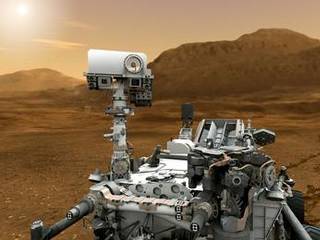Our rover is excelling in autonomous navigation, allowing us to drive longer distances into new areas that were previously not visible. Today, we are confident enough in the view ahead to plan a drive of over 100 meters, with the last approximately 45 meters using AutoNav. However, driving such a distance leaves little time for targeted scientific observations, leaving only a few minutes today for studying intriguing features along the way to Aeolis Mons (“Mt. Sharp”). Despite this trade-off between observations and drive distance being expected once AutoNav was successfully tested on the B computer, it is still a difficult decision to make.
The choice of Gale crater as the landing site for the Mars Science Laboratory (MSL) was precisely because of the opportunity to investigate the geologic history preserved in the layers of Aeolis Mons. The ultimate scientific objective is to reach the base of the mountain with minimal delays and prioritize studying its intriguing geological layers.
